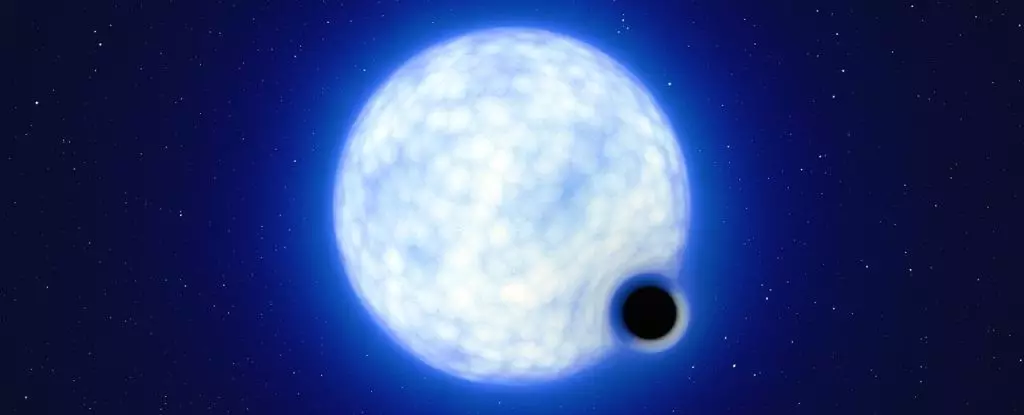The cosmos is a place of immense wonder and mystery, where stars are born, shine bright, and eventually meet their demise in spectacular ways. However, some stars seem to defy conventional understanding by simply disappearing without a trace. For astronomers and astrophysicists, these vanishing stars present a perplexing puzzle that challenges our current knowledge of stellar evolution.
Recent studies have shed light on this cosmic enigma, offering a new perspective on the fate of massive stars that seem to vanish from the night sky. According to research led by astrophysicist Alejandro Vigna-Gómez, some massive stars may not go out with a bang, as previously believed, but rather with a whimper. The discovery of a binary system named VFTS 243 in the Large Magellanic Cloud has provided compelling evidence for this theory. This system, consisting of a black hole and a companion star, shows no signs of a supernova explosion that typically accompanies the formation of a black hole.
When a star more massive than about 8 times the mass of the Sun undergoes supernova, the process is usually messy and explosive. The outer layers of the star are violently ejected into space, creating a cloud of dust and gas that can linger for millions of years. However, in the case of some massive stars like those in the VFTS 243 system, the collapse may be so complete that no explosion occurs. This silent death means that the star simply vanishes without a bright supernova event in the night sky.
VFTS 243 is a fascinating system that challenges our conventional understanding of stellar evolution. With a massive star approximately 7.4 million years old and a black hole 10 times the mass of the Sun, this binary system offers a unique opportunity to study the direct collapse of massive stars into black holes. The almost circular orbit of the black hole and the lack of a significant natal kick suggest that this black hole may have formed through total collapse without the need for a supernova explosion.
The findings from the study of VFTS 243 have significant implications for our understanding of stellar evolution and the formation of black holes. The direct collapse of massive stars into black holes challenges previous models that rely on supernova explosions as the primary mechanism for black hole formation. By observing the disappearance of stars like those in the VFTS 243 system, astronomers can gain valuable insights into the complex processes that govern the life and death of stars in our universe.
The enigma of vanishing stars presents a compelling mystery that continues to captivate the minds of astronomers and astrophysicists. The case of VFTS 243 highlights the complexity and diversity of stellar evolution, challenging our preconceived notions of how massive stars meet their end. As we delve deeper into the mysteries of the cosmos, we may uncover even more secrets about the elusive fate of stars that disappear without a trace.



Leave a Reply